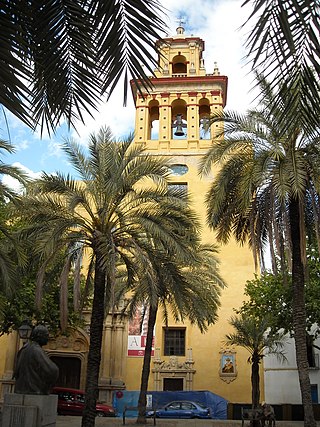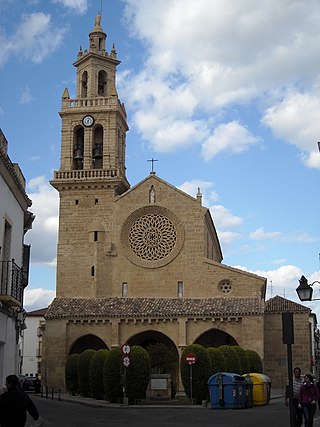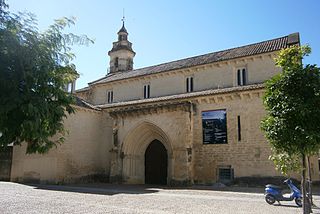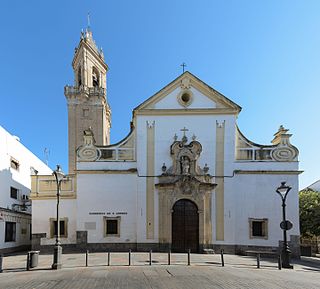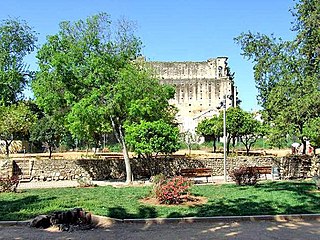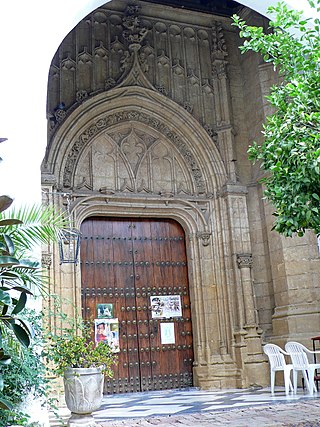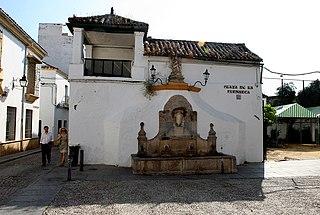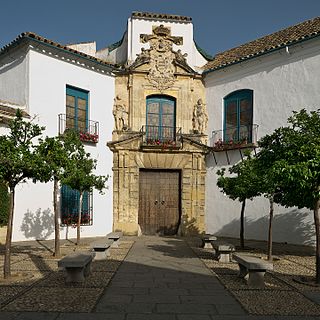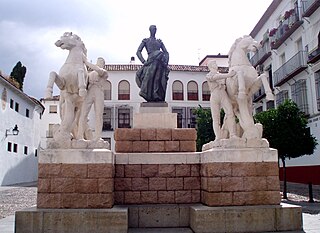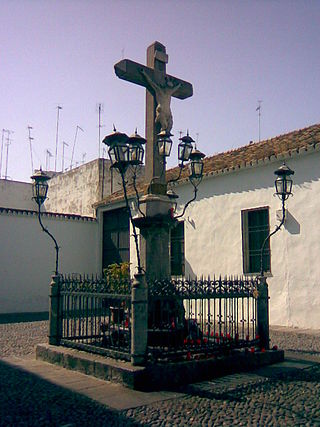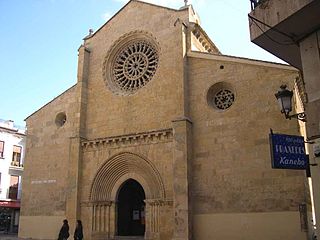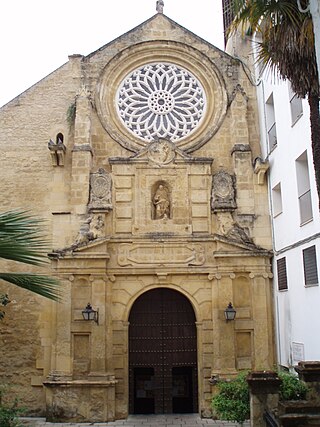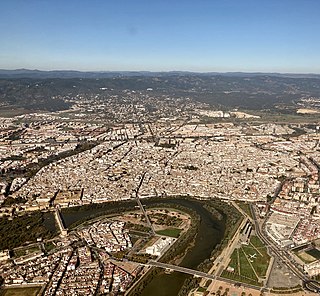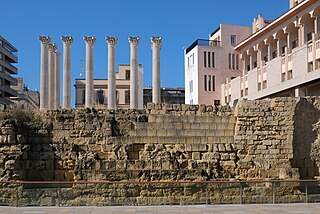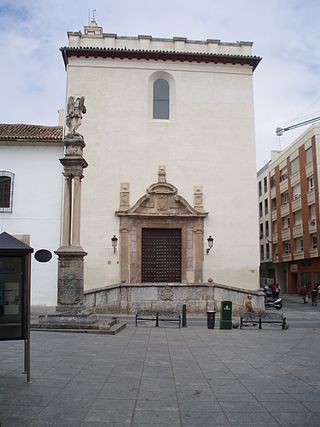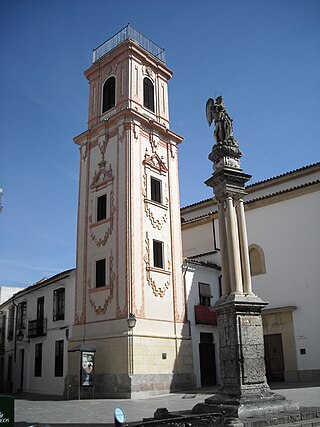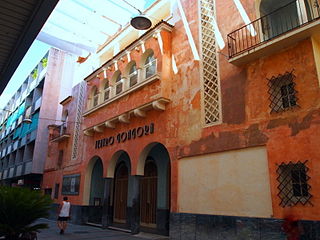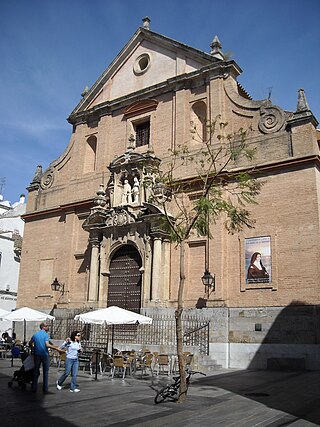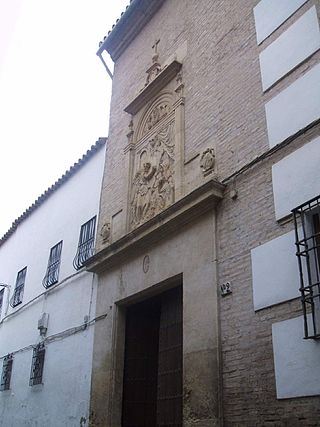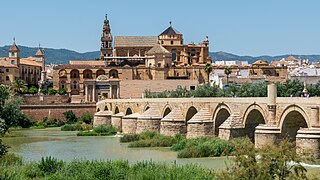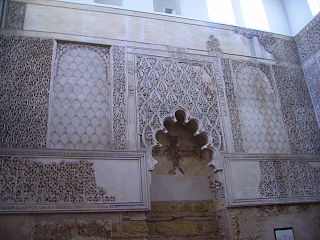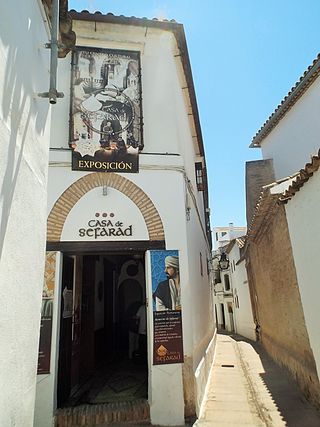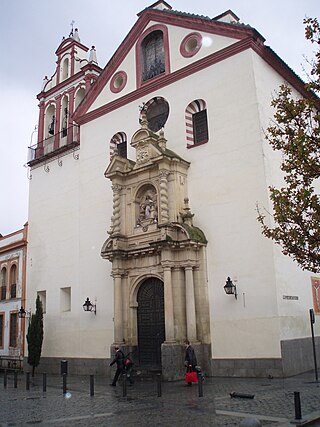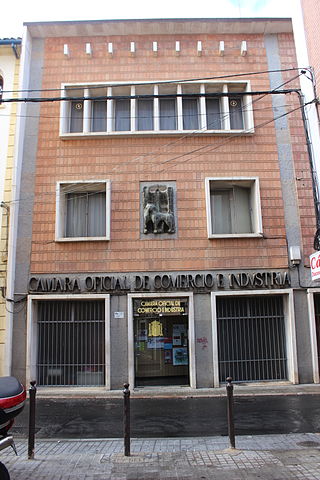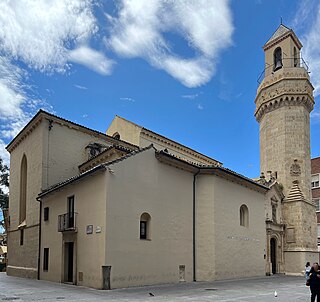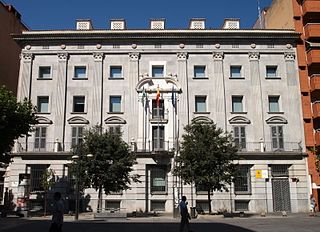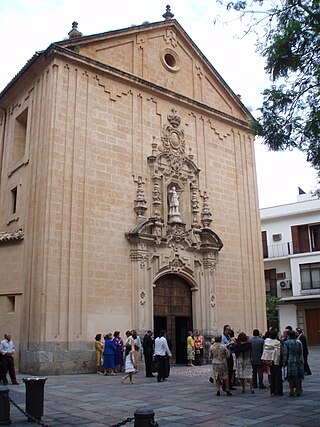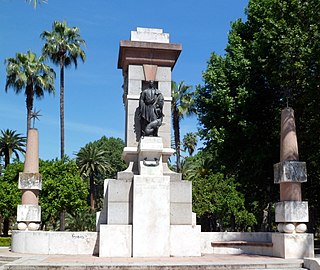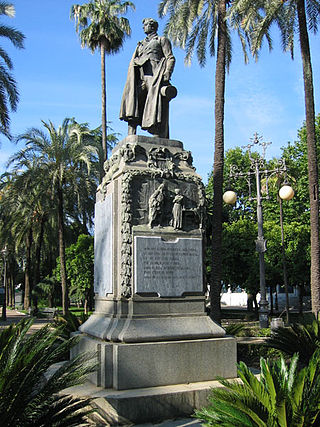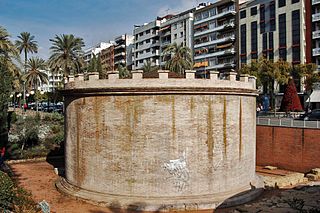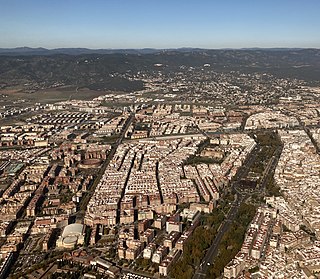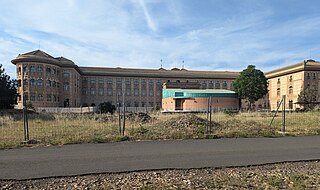Self-guided Sightseeing Tour #1 in Córdoba, Spain
Legend
Guided Free Walking Tours
Book free guided walking tours in Córdoba.
Guided Sightseeing Tours
Book guided sightseeing tours and activities in Córdoba.
Tour Facts
8.5 km
143 m
Experience Córdoba in Spain in a whole new way with our free self-guided sightseeing tour. This site not only offers you practical information and insider tips, but also a rich variety of activities and sights you shouldn't miss. Whether you love art and culture, want to explore historical sites or simply want to experience the vibrant atmosphere of a lively city - you'll find everything you need for your personal adventure here.
Activities in CórdobaIndividual Sights in CórdobaSight 1: Iglesia Conventual de San Agustin
The Church of San Agustín is a church in Cordoba, Spain. Located in the Plaza de San Agustín, construction began in 1328, and there is evidence of the construction of the main chapel in 1335. The current appearance of the church is from the first third of the seventeenth century.
Sight 2: Iglesia de San Lorenzo
San Lorenzo is a church in Córdoba, Andalusia, southern Spain. Situated in the historic centre, it was one of the twelve religious buildings commissioned by king Ferdinand III of Castile in the city after its conquest in the early 13th century.
Sight 3: Iglesia de la Magdalena
Santa María Magdalena is a church in Córdoba, Spain, built in the Mudejar style. It forms part of the Historic centre of Córdoba, a UNESCO World Heritage site, and is named after Jesus' companion, Mary Magdalene.
Sight 4: Iglesia de San Andrés
The church of San Andrés is one of the so-called Fernandine churches of Córdoba (Spain). The temple was founded in the thirteenth century and underwent numerous renovations in the fourteenth and fifteenth centuries. On April 17, 1985 it was declared an Asset of Cultural Interest with the category of Monument.
Sight 5: Jardines de Orive
The Orive Gardens is an urban park in Córdoba (Spain), located between Pedro López Street and Orive Square.
Sight 6: Convento de Santa Marta
The Convento de Santa Marta is a convent in Córdoba, Spain, on Calle de Santa Marta. Founded in 1464, it belongs to the female branch of the order Hieronymites.
Sight 7: Fuente de la Fuenseca
The Fuenseca fountain is a fountain located in the square of the same name, in the San Andrés-San Pablo neighborhood of the city of Córdoba (Spain). It was built in 1808 as a reconstruction of an older fountain. It owes its name to the low flow of the original fountain, built in the fifteenth century.
Sight 8: Palacio Marqués de Viana
The Viana Palace is a palace-museum in the city of Córdoba (Spain), located in the Santa Marina neighborhood. On March 27, 1981 it was declared an Asset of Cultural Interest in the category of Monument.
Sight 9: Monumento a Manolete
The monument to Manolete is a sculptural set dedicated to the bullfighter Manolete located in the Plaza del Conde de Priego in the city of Córdoba (Spain). This monument, the work of the sculptor Manuel Álvarez Laviada, was inaugurated on May 8, 1956.
Sight 10: Cristo de los Faroles
The Christ of Atonement and Mercy, popularly known as the Christ of the Lanterns, is a large Crucifix located at the Plaza de los Capuchinos in Cordoba, Spain.
Sight 11: Iglesia de San Miguel
San Miguel is a Roman Catholic church in Córdoba, Andalusia, southern Spain. It is one of the twelve churches built by order of King Ferdinand III of Castile in the city after its conquest in the early 13th century. It was declared a monument of national interest in 1931.
Sight 12: Iglesia de San Pablo
San Pablo is a church and former convent in Córdoba, Andalusia, southern Spain. The present church and defunct convent were built on a space that always harbored large buildings for its location at the door of the city along one of the main access roads. A Roman Circus predated a Muslim palace before Almohad Christians built a Dominican convent.
Sight 13: Córdoba
Córdoba, or sometimes Cordova, is a city in Andalusia, Spain, and the capital of the province of Córdoba. It is the third most populated municipality in Andalusia.
Sight 14: Templo romano
The Spanish city of Córdoba has the remains of a Roman temple, which was discovered in the 1950s during the expansion of City Hall. It is located in the angle formed by the streets Claudio Marcelo and Capitulares. It was not the only temple that the city had, but it was possibly the most important of all, and the only known by archaeological excavation. It is a Pseudoperipterus, hexastyle and of Corinthian order temple of 32 meters long and 16 wide.
Sight 15: Iglesia de Santo Domingo de Silos
The Royal Church of El Salvador and Santo Domingo de Silos and the College of Santa Catalina de Córdoba (Spain) were conceived as a single entity and constitute a set of buildings around which the urban fabric of the city is formed. It was built by the Society of Jesus in the sixteenth century.
Wikipedia: Iglesia de San Salvador y Santo Domingo de Silos (Córdoba) (ES)
Sight 16: Triunfo de San Rafael
The Triumph of San Rafael in the Plaza de la Compañía is one of the many triumphs in the city of Córdoba (Spain) dedicated to the archangel San Rafael, guardian angel of the city. It is located in the Plaza de la Compañía and was one of the first triumphs that the city had. It was built by the contributions that the faithful made for its construction on the site that is still preserved in 1736.
Wikipedia: Triunfo de San Rafael (Plaza de la Compañía) (ES)
Sight 17: Estatua al Gran Capitán
The monument to the Great Captain is a work dedicated to Gonzalo Fernández de Córdoba "The Great Captain", located in the Plaza de las Tendillas in the Spanish city of Cordoba. It is an equestrian sculpture in bronze, with the exception of the head, carved in white marble. It was made by Mateo Inurria from Cordoba in 1923, although it was moved to its current location in 1927.
Sight 18: Teatro Góngora
The Góngora Theatre, also known as Góngora Cinema or Pathè Cinema, is a theatre in Córdoba, Spain. It was built as a cinema between 1929 and 1932, designed by the Madrid architect Luis Gutiérrez Soto. Built on the site of the old convent of Jesús María, it occupies 950 m², and is located on Jesús María street.
Sight 19: Iglesia de Santa Ana
The Convent of Santa Ana is a religious building located on Ángel de Saavedra Street in the city of Cordoba, Spain. It is a Baroque-style temple with a Latin cross floor plan and on whose façade, in a niche, is the representation of Saint Anne, the Virgin and the Child. The enclosure stands out for its cloister, the Renaissance staircase with the founder's coat of arms and a loggia that communicates with the back garden.
Sight 20: Museo Arqueológico y Etnológico de Córdoba
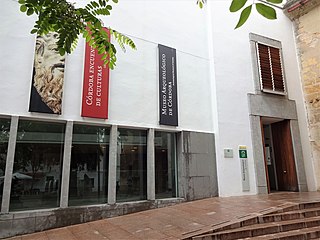
The Archaeological and Ethnological Museum of Córdoba is a museum in Córdoba, Spain. Owned by the Spanish State, its management has been transferred to the Ministry of Culture of the Junta of Andalusia.
Wikipedia: Archaeological and Ethnological Museum of Córdoba (EN)
Sight 21: Monasterio de la Encarnación
The Monastery of the Incarnation is a Roman Catholic convent located in the city of Cordoba, Spain. Its church was declared an Asset of Cultural Interest on April 2, 1982.
Sight 22: Calleja de las Flores
Get Ticket*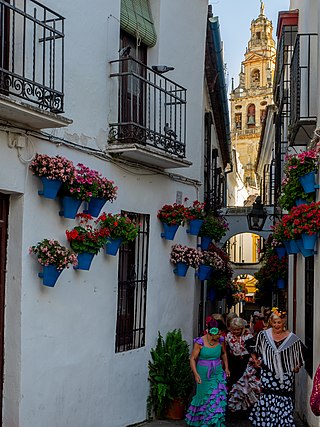
The Calleja de las Flores is one of the most popular tourist streets of Córdoba city in Andalusia, Spain. Positioned as an intersection of the street Velázquez Bosco, is a narrow street that ends in a plaza.
Sight 23: historic centre
The historic centre of Córdoba, Spain is one of the largest of its kind in Europe. In 1984, UNESCO registered the Mosque–Cathedral of Córdoba as a World Heritage Site. A decade later, it expanded the inscription to include much of the old town. The historic centre has a wealth of monuments preserving large traces of Roman, Islamic, and Christian times.
Sight 24: Iglesia de San Pedro de Alcántara
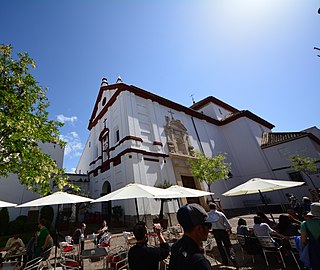
The church of San Pedro de Alcantara is a Roman Catholic church located in the city of Cordoba, Spain. It is located in the Plaza del Cardenal Salazar in the Jewish Quarter of Cordoba, included in the denomination of Historic Center of Cordoba, recognized as a World Heritage Site. It is also protected with the category of Asset of Cultural Interest.
Sight 25: Sinagoga
The Córdoba Synagogue is a historic former Jewish congregation and synagogue located at 20 Calle de los Judíos in the Jewish Quarter of Córdoba, Andalusia. Completed in 1315, with its Mudéjar design attributed to Isaac Makheb, the synagogue's small size points to it possibly being the private synagogue of a wealthy resident. It is also possible that Córdoba's complex of buildings was a yeshiva, kollel, or beth midrash. Another possibility is that it was initially a local trade guild’s workroom or a residence before converting to a synagogue.
Sight 26: Casa de Sefarad
Get Ticket*The Casa de Sefarad, located in Córdoba (Spain), is a museum and cultural center opened in 2006 about Sephardic culture, history and tradition. It is located in an old Jewish house from the fourteenth century in the heart of the Jewish quarter and just opposite the Synagogue of Cordoba. It is a privately owned museum.
Sight 27: Casa del Indiano
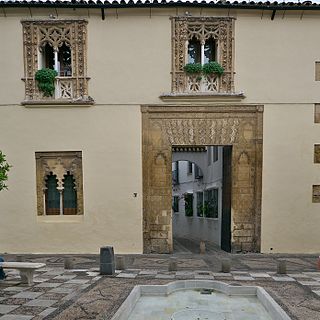
The Casa del Indiano, also known as Casa de los Ceas, was a house-palace located in the Plaza Ángel de Torres in Córdoba (Spain). Currently only the main façade of the building is preserved, the interior being occupied by apartments and the Calleja del Indiano, which is accessed through the door of the old façade.
Sight 28: Iglesia de San Juan y Todos los Santos
San Juan y Todos los Santos, also known as Iglesia de la Trinidad, is a Catholic church located on the Plaza de la Trinidad in Córdoba, Spain. It stands on the site of the former Convento de la Trinidad established shortly after Fernando III conquered the city in 1236. Built in the Baroque style, it forms part of the Historic centre of Córdoba, a UNESCO World Heritage site.
Sight 29: Cámara de Comercio e Industría de Córdoba
The Chamber of Commerce of Córdoba is a building located on Pérez de Castro Street No. 1, in Córdoba. It was projected by the architects Rafael de La-hoz Aderius and José María García Paredes. The construction of the building begins in 1952 and concludes in 1955, and represents the search for a new architectural language in modernity. It is the raw opera of young architects, which allowed them to express themselves with a freedom that was not usual. In the words of Rafael de La-Hoz «the Chamber of Commerce, therefore, for us a starting point and a base of evolution, a living and throbbing reality of architecture, and the joyful experience of playing for the first time, made matter , the cold and speculative lines of the plans ». Rafael de la-Hoz Arderius would carry out very important works in the city of Córdoba, such as the El Águila beer factory building (Córdoba), the Provincial Savings Bank building in Córdoba or the General Hospital General of Córdoba building. The Superior Council of the Colleges of Architecture of Spain, awarded the 2000 Gold Medal, to Rafael de La-Hoz Arderius, for its outstanding professional career.
Wikipedia: Edificio de la Cámara de Comercio de Córdoba (ES)
Sight 30: Iglesia de San Nicolás de la Villa
San Nicolás de la Villa is a church in Córdoba, Andalusia, southern Spain.
Sight 31: Edificio del Banco de España
The Bank of Spain building is located at number 7 Avenida del Gran Capitán in Cordoba. It was built between 1935 and 1939, being the work of the architect Secundino Zuazo Ugalde. This building was located on the site that years ago occupied the Ramírez Hall, as well as many other businesses that were established in it.
Sight 32: Colegiata de San Hipólito
The Royal Collegiate Church of Saint Hippolytus is a Catholic Church in Córdoba, (Spain) founded in 1343 at the initiative of King Alfonso XI of Castile. The church, which was later granted in perpetuity to the Society of Jesus, contains the tombs of King Ferdinand IV and his son Alfonso XI.
Sight 33: Monumento a Julio Romero de Torres
The monument to Julio Romero de Torres is a commemorative monument, dedicated to said painter, located in the gardens of agriculture of the city of Córdoba (Spain) and made in 1940. It was promoted by the City of Córdoba in tribute after the Death of the painter, taking care of the work to the Almeria sculptor Juan Cristóbal González Quesada who mainly used stone for the whole and bronze for sculpture.
Wikipedia: Monumento a Julio Romero de Torres (Córdoba) (ES)
Sight 34: Monumento al Duque de Rivas
The monument to the Duke of Rivas is a sculptural monument dedicated to the poet and playwright Ángel de Saavedra, located in the Victoria Gardens of Córdoba (Spain). The work of the famous sculptor Mariano Benlliure, it was built in 1929. It was said that this sculpture alone was enough to justify the fame of its author.
Sight 35: Mausoleos Romanos
The Roman mausoleum of Córdoba is an ancient structure in the Jardines de la Victoria, Córdoba, Andalusia, southern Spain. It is a funerary monument of cylinder-shaped that corresponded to a group of funerary monuments of the Republican era, built in the 1st century AD. It was discovered in 1993 during archaeological excavations.
Sight 36: Jardines de la Victoria
The Jardines de la Victoria are public gardens located in Cordoba, Spain. These gardens are located between two large avenues; the Paseo de la Victoria and República Argentina Avenue. It receives its name from the convent of Nuestra Señora de la Victoria, an old convent demolished in the nineteenth century.
Sight 37: Anfiteatro de Córdoba
The Amphitheatre of Cordoba is an ancient Roman amphitheatre located in the city of Cordoba, Spain. Built in the first century, it is the largest known amphitheatre in Hispania and the third largest in the entire empire after the Colosseum and the amphitheatre of Carthage, although at the time of its construction it was the largest ever built. The amphitheatre was active until the beginning of the fourth century.
Share
How likely are you to recommend us?
Disclaimer Please be aware of your surroundings and do not enter private property. We are not liable for any damages that occur during the tours.
GPX-Download For navigation apps and GPS devices you can download the tour as a GPX file.
